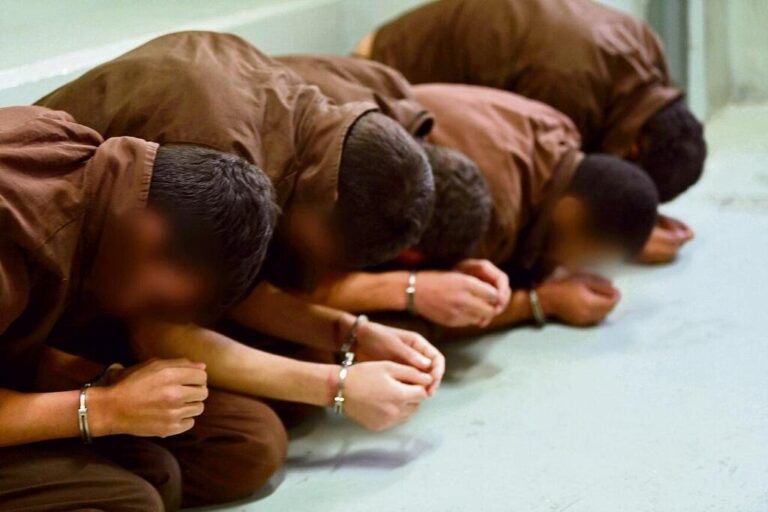North Korea fired two short-range ballistic missiles toward its eastern waters on Sunday, the latest of its recent barrage of weapons tests, a day after the North warned the redeployment of a U.S. aircraft carrier near the Korean Peninsula was inflaming regional tensions.
South Korea’s Joint Chiefs of Staff said in a statement that it detected two missile launches Sunday between 1:48 a.m. and 1:58 a.m. from the North’s eastern coastal city of Munchon. It added that South Korea’s military has boosted its surveillance posture and maintains a readiness in close coordination with the United States.
Japanese Vice Defense Minister Toshiro Ino also confirmed the launches, saying the North’s testing activities are “absolutely unacceptable” as they threaten regional and international peace and security.
Ino said the weapons could be submarine-launched ballistic missiles. “We are continuing to analyze details of the missiles, including a possibility that they might have been launched from the sea,” Ino said.
North Korea’s pursuit of an ability to fire missiles from a submarine would constitute an alarming development for its rivals because it’s harder to detect such launches in advance. North Korea was believed to have last tested a missile launch from a submarine in May.
Ino said both missiles launched Sunday flew about 350 kilometers (217 miles) at a maximum attitude of 100 kilometers (60 miles) before they fell into the waters between the Korean Peninsula and Japan.
Japanese Prime Minister Fumio Kishida separately instructed officials to gather and analyze all information they could and expedite any updates about the tests to the public. His office said it also was seeking to ensure the safety of all aircraft and ships in waters around Japan while preparing for any contingencies.
The U.S. Indo-Pacific Command said in a statement that the launches didn’t pose any immediate threat to U.S. personnel or territory, or to its allies. But it said the launches highlight “the destabilizing impact” of North Korea’s unlawful weapons of mass destruction and ballistic missile programs. It said the U.S. commitments to the defense of South Korea and Japan remain “ironclad.”
The launch, the North’s seventh round of weapons tests in two weeks, came hours after the United States and South Korea wrapped up a new round of two-day naval drills off the Korean Peninsula’s east coast.
The drills involved the nuclear-powered aircraft carrier USS Ronald Reagan and its battle group, which returned to the area after North Korea fired a powerful missile over Japan last week to protest the carrier group’s previous training with South Korea.
On Saturday, North Korea’s Defense Ministry warned that the Reagan’s redeployment was causing a “considerably huge negative splash” in regional security. The North’s Defense Ministry called its recent missile tests a “righteous reaction” to intimidating military drills between South Korea and the United States.
North Korea regards U.S.-South Korean military exercises as an invasion rehearsal and is especially sensitive if such drills involve U.S. strategic assets such as an aircraft carrier. North Korea has argued it was forced to pursue a nuclear weapons program to cope with U.S. nuclear threats. U.S. and South Korean officials have repeatedly said they have no intentions of attacking the North.
North Korea’s latest launches added to its record-breaking pace of weapons tests this year. The recent weapons tests included a nuclear-capable missile that flew over Japan for the first time in five years. It was estimated to have traveled about 4,500-4,600 kilometers (2,800-2,860 miles), a distance sufficient to reach the U.S. Pacific territory of Guam and beyond.
Sunday’s launches came on the eve of the 77th foundation anniversary of the North Korean ruling Workers’ Party.
Earlier this year, North Korea tested other nuclear-capable ballistic missiles that place the U.S. mainland and its allies South Korea and Japan within striking distance.
North Korea’s testing spree indicates its leader, Kim Jong Un, has no intention of resuming diplomacy with the U.S. and wants to focus on expanding his weapons arsenal. But some experts say Kim would eventually aim to use his advanced nuclear program to wrest greater outside concessions, such as the recognition of North Korea as a legitimate nuclear state, which Kim thinks is essential in getting crippling U.N. sanctions on his country lifted.
South Korean officials recently said North Korea was also prepared to test a new liquid-fueled intercontinental ballistic missile and a submarine-launched ballistic missile while maintaining readiness to perform its first underground nuclear test since 2017.
(AP)











